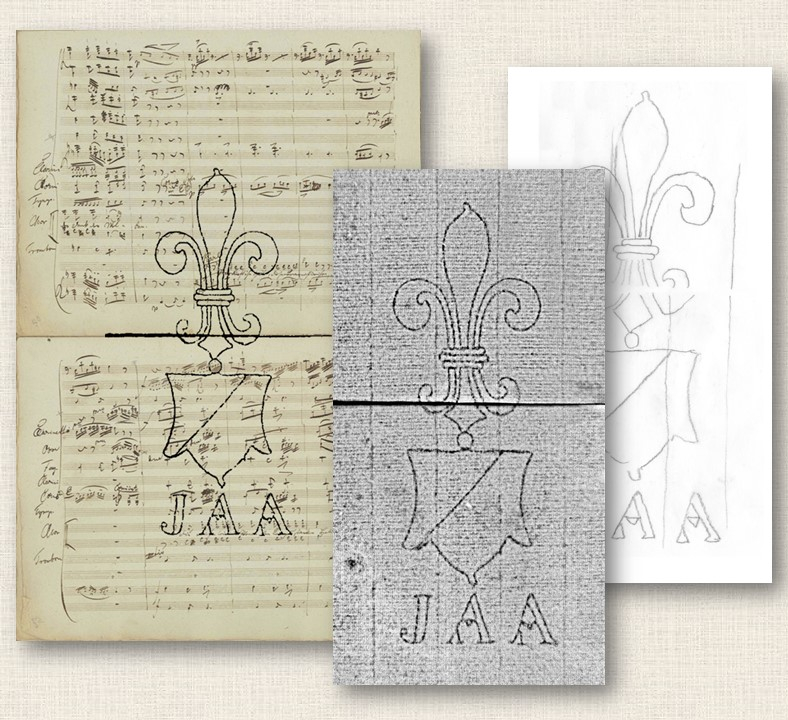DRACMarkS
Digitization, Recognition, and Automated Clustering of Watermarks in the Music Manuscripts of Franz Schubert
The interdisciplinary project DRACMarkS (Digitization, Recognition, and Automated Clustering of Watermarks in the Music Manuscripts of Franz Schubert) offers a new perspective on the imprinted images and symbols found in the music manuscripts of Viennese composer Franz Schubert. As part of the Heritage Science Austria funding programme of the Austrian Academy of Sciences, the project incorporates thermography, machine learning and signal processing to produce digitized watermarks for databases and manuscript descriptions as well as to curtail the approximate dating of some undated autographs. By applying fingerprint recognition software to the acquired high-quality watermark images, a new method for automatic categorization will be developed.
The cataloguing of Schubert's manuscripts is a major concern of the Viennese Research Group of the New Schubert Edition (NSE). Since the NSE’s beginnings in the 1960s, dating of the sources and analysis of the different paper types Schubert used have been central tasks which both provide supplementary information on the genesis of the works. Thanks to the continuous source documentation, the NSE can now draw on a stock of more than 1,300 handwritten watermark tracings. Unfortunately, some tracings were created under unfavorable conditions and do not allow for a comparative overview.
This is where the project comes in: while applying innovative methods of digitization – in collaboration with scientists from the Acoustics Research Institute (ARI) of the ÖAW – new and objective results will be achieved. Initially, the watermarks in Schubert’s manuscripts will be precisely recorded through the use of a thermographic camera. The resulting images will then be compared by identifying and matching characteristic points of interest. This process resembles methods found in fingerprint recognition and will verify previous findings of Schubert research. In correlation with other collections, an interface will be developed to facilitate the search for similar and identical watermarks. To ensure open access and long-term archiving, the data will be structured according to the guidelines of the Music Encoding Initiative (MEI) and entered into a database (accessible via the future research platform schubert-digital.at) as well as into the Watermark Information System (WZIS). In a further step machine learning will be applied to analyze the differences between the handwritten tracings and the thermographic images. By using style-transfer learning the tracings can be transformed, so that the images resemble those that were produced by thermography. On this basis, handwritten tracings, which cannot be captured digitally for various reasons, will also be included into our research considerations. This approach will open new research possibilities and will establish a general application scenario for similar projects based on analog and digitally processed research data.




Project Duration
1 September 2021 - 31 August 2024
Team
Clemens Gubsch
Links
